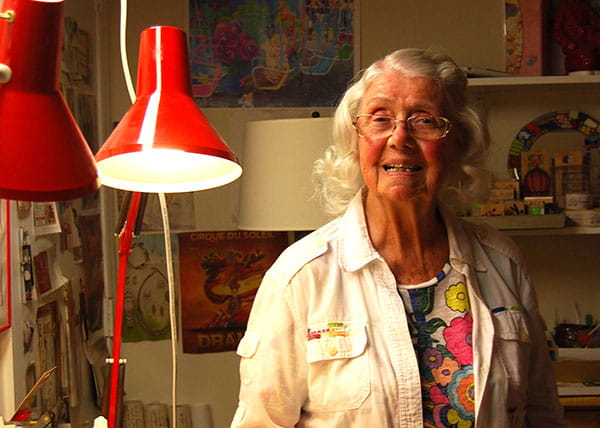Lauralou Courtney Bates

In 1946, Lauralou Courtney Bates became one of the first women ever to receive a master's fellowship at Drexel University, breaking an important barrier at the institution that had already awarded her a full scholarship for undergraduate studies in home economics.
She's been breaking barriers ever since. Bates, who at 93 years old still gets pleasure out of working in her studio, went on to create a career that stood on the frontlines of history, both in terms of fashion design and the role of women in the workplace.
At a time when most women were not yet working outside the home, Bates - who also raised four children - started her own company and traveled all over the world to create and manufacture her own clothing lines. Eventually, she became a celebrated couturier with retailers like Bonwit Teller, Neiman Marcus, Lord & Taylor and Saks 5th Avenue, and had a long list of celebrity clients commissioning her work.
"I used to meet Ed McMahon on the train to New York all the time. He'd see me carrying my stuff, and pretty soon he asked me to make something for Miss Liberty Bowl to wear," Bates says, referring to the annual college football game that began, famously, in Philadelphia. "Johnny Carson too. He'd come down to the games in his little porkpie hat and nothing warm to wear, so he'd sit in the booth with me and share my blanket. All their wives came to me for clothes."
Throughout it all, her inventive spirit kept her on the cutting edge of fashion.
"I was doing things like sewing patches on raw edges, and making clothes with holes in them a long time ago," she says.
And her breakthrough talents were not limited to clothing.
A line of floral paper wrappings she developed for her first employer, Wolff Industries, ultimately transformed the packaging industry, as printed products rapidly replaced plain white and brown wrapping at most major retailers.
"I guess you could say that I brought fashion into the paper business," she says.
Once, by odd circumstance, Bates even used her talents to help create a medical device. She'd taken a knitting class with an expert instructor, and wound up using her pattern drafting skills to help him design a patch material for use in open-heart surgery - something he'd been commissioned to do by a group of surgeons.
"I just took that class because I wanted to learn how to knit a butterfly," she says. "But he couldn't figure out how to get the patch to attach to human tissue, so I helped him with that part."
Bates now says she owes everything to the university that took a big bet on her, back when she was just about to graduate from Germantown High School.
"I consider myself a two time winner," she says. "Drexel gave me two degrees, yes, but really it gave me everything that I know how to do. I can truly say that I owe my career to Drexel."
Contact Us
3142 Market Street, 1st Floor
Philadelphia, PA 19104
P.O. Box 8215
Philadelphia, PA 19101-9684